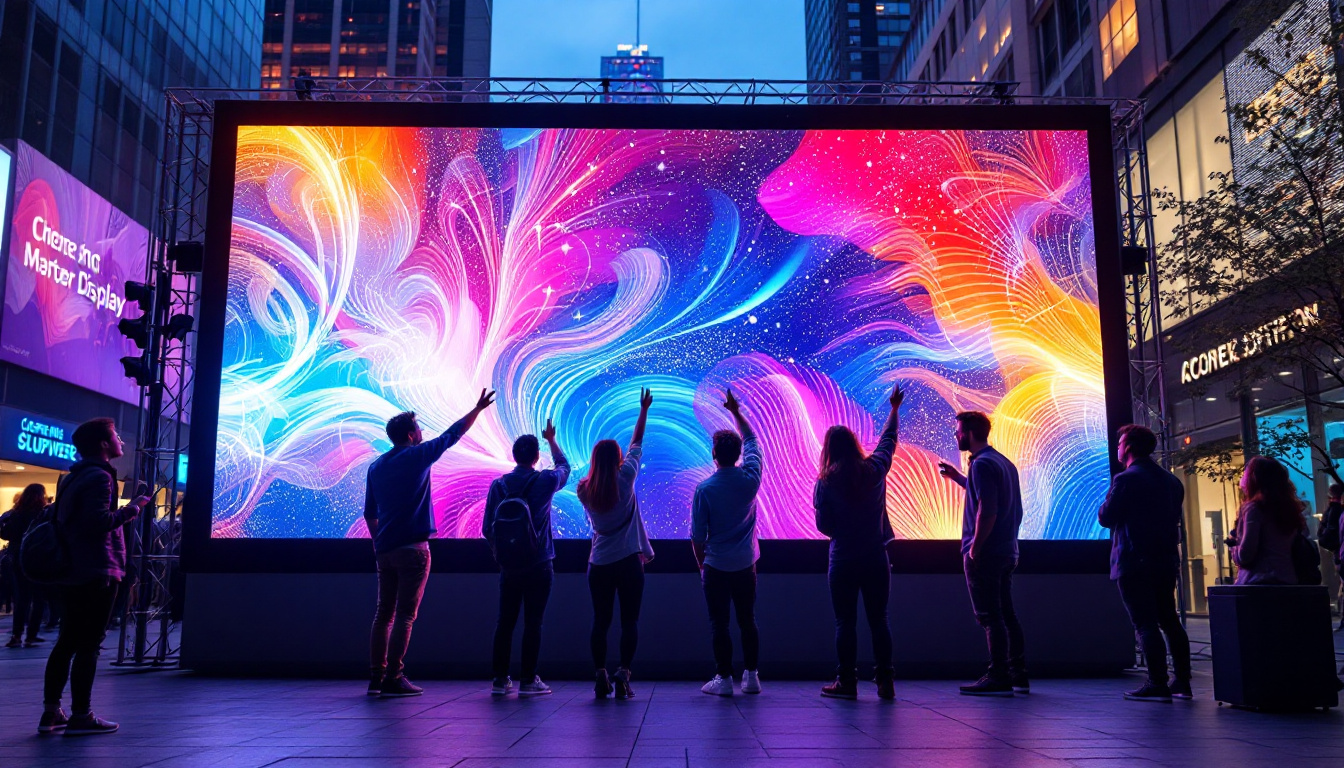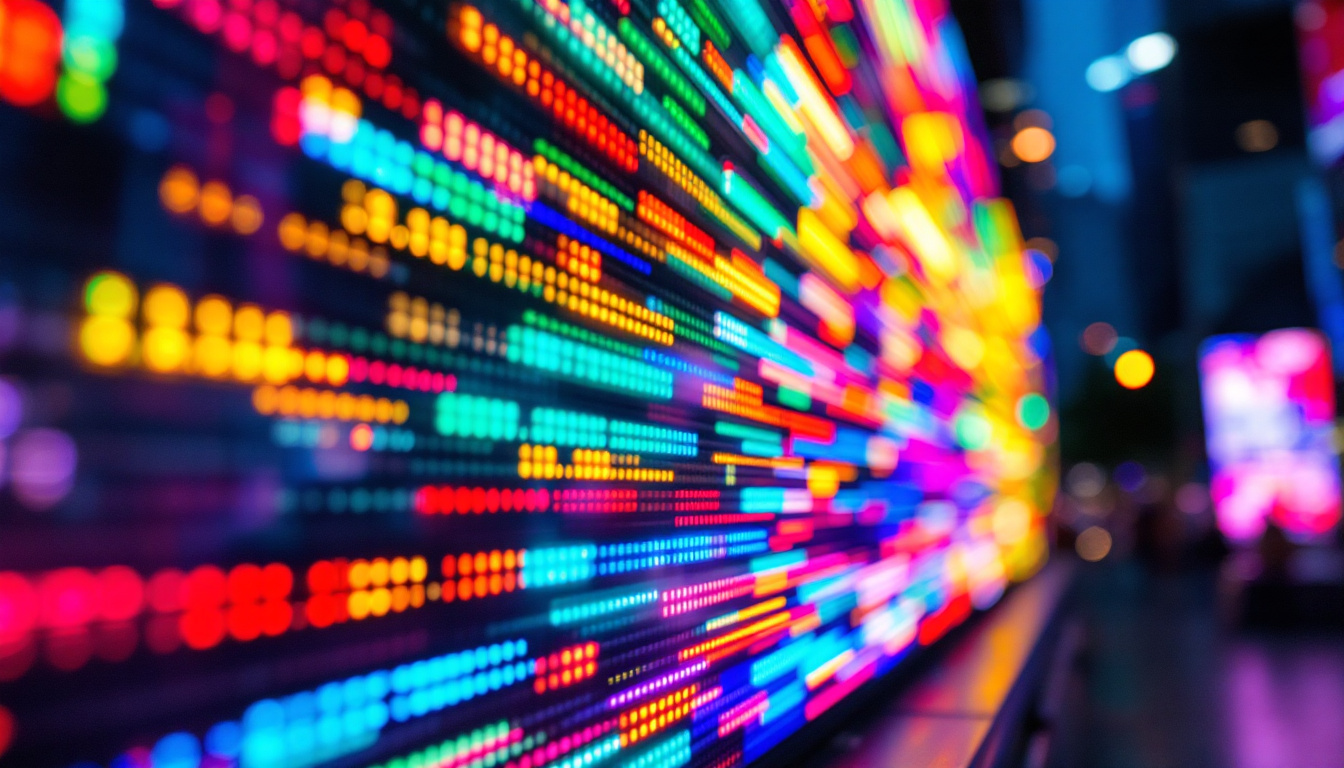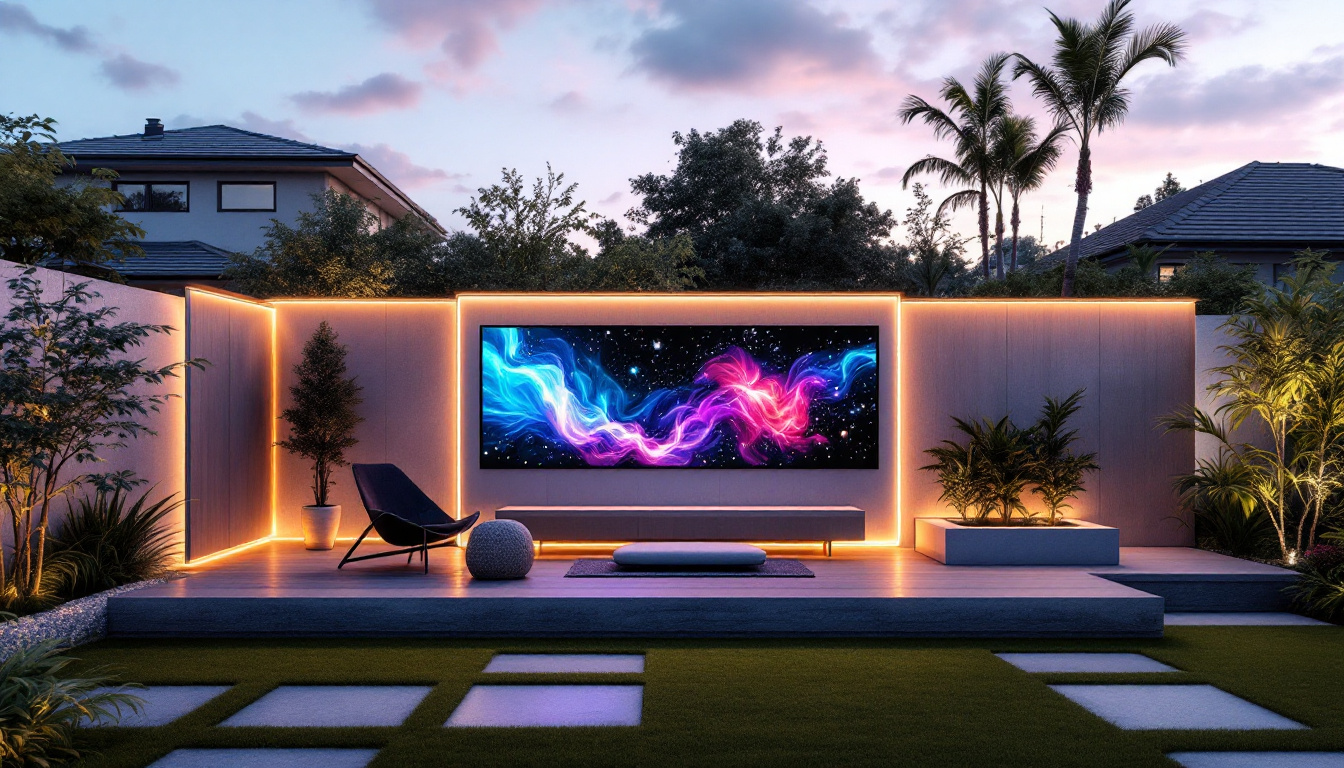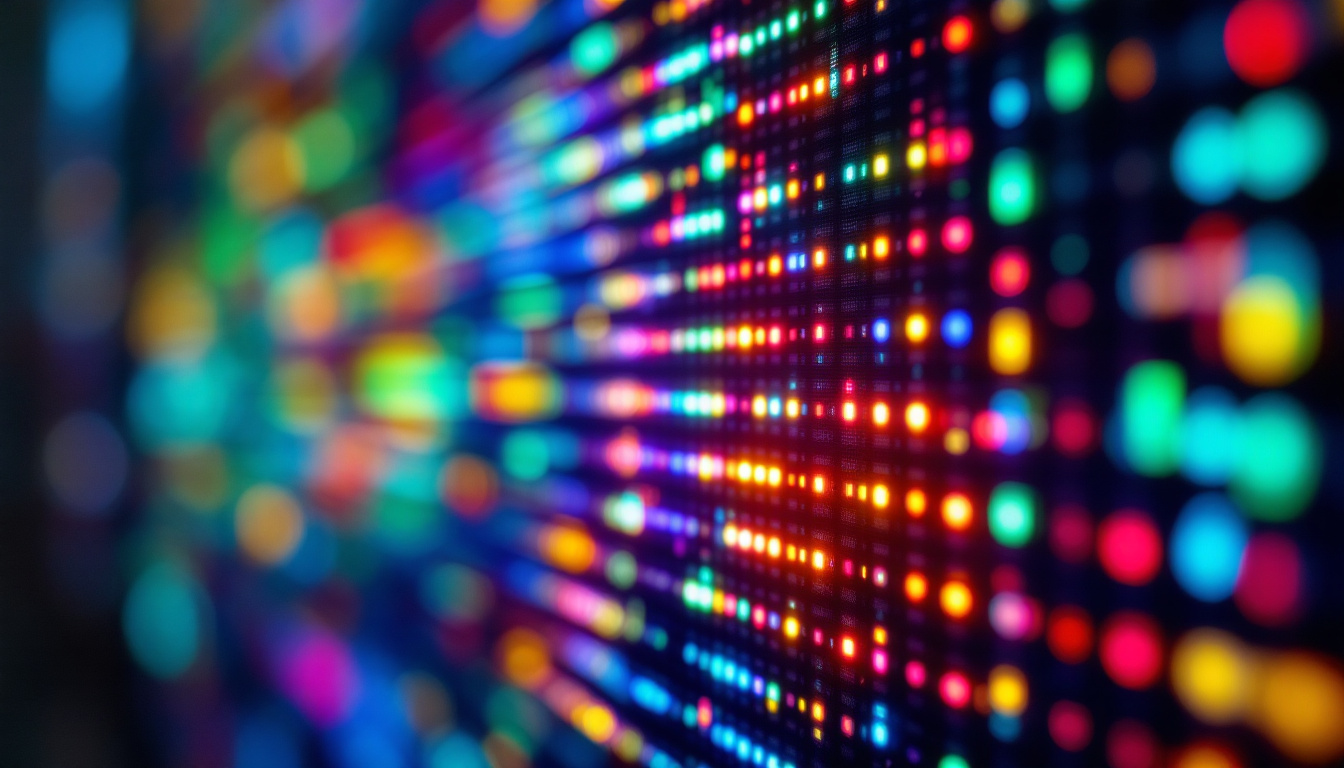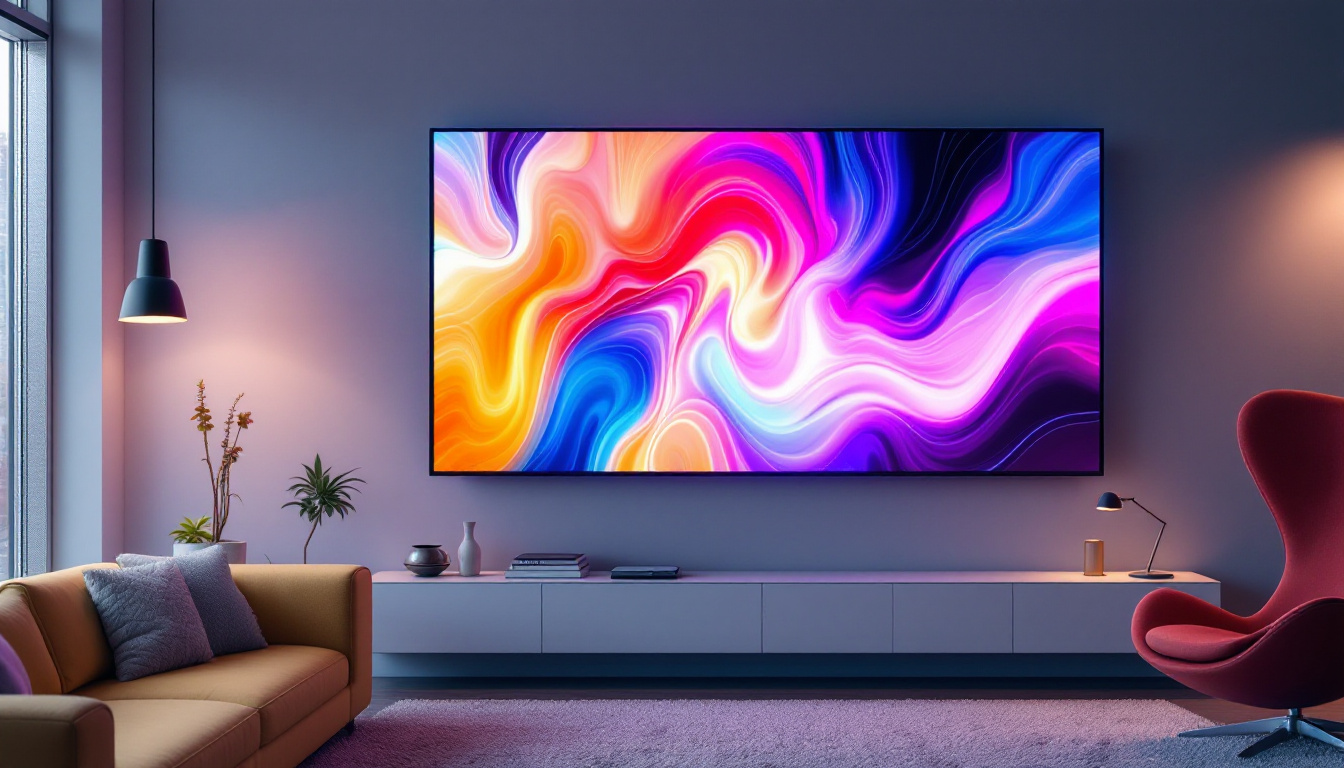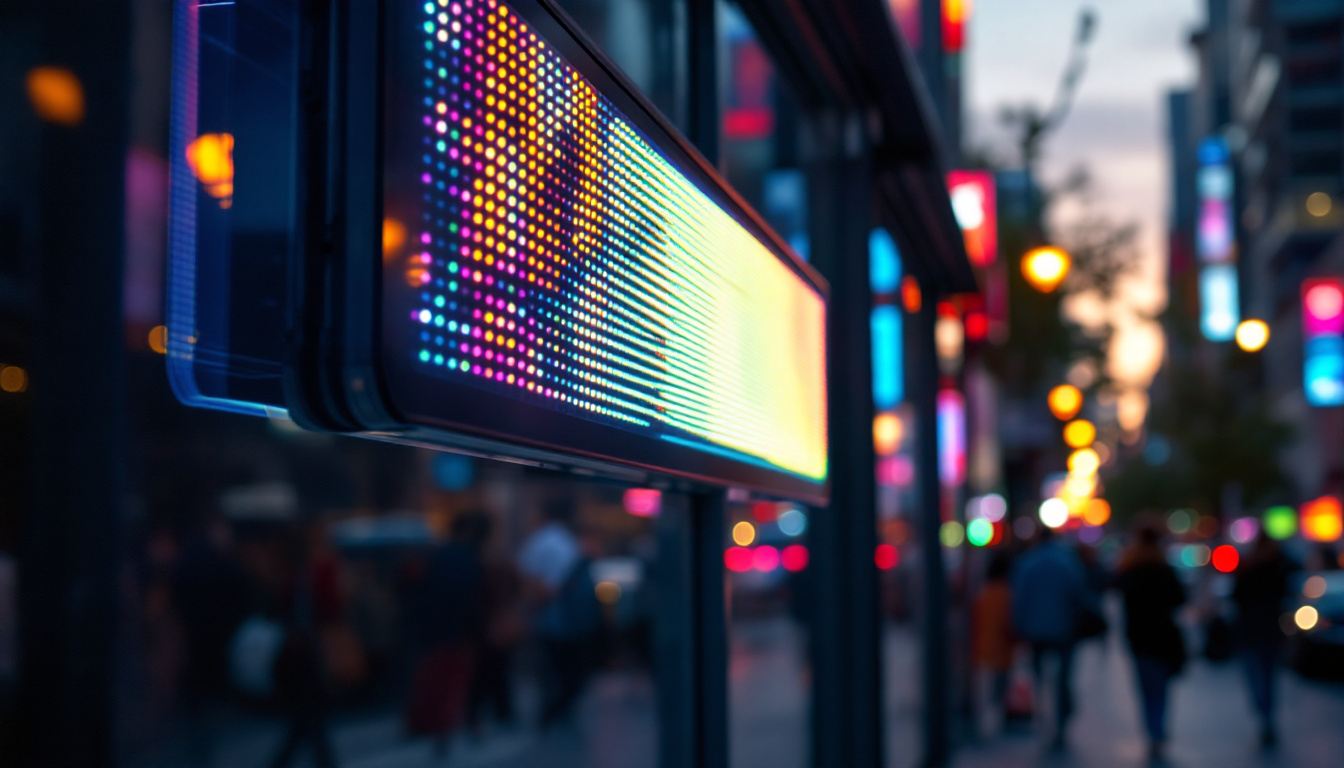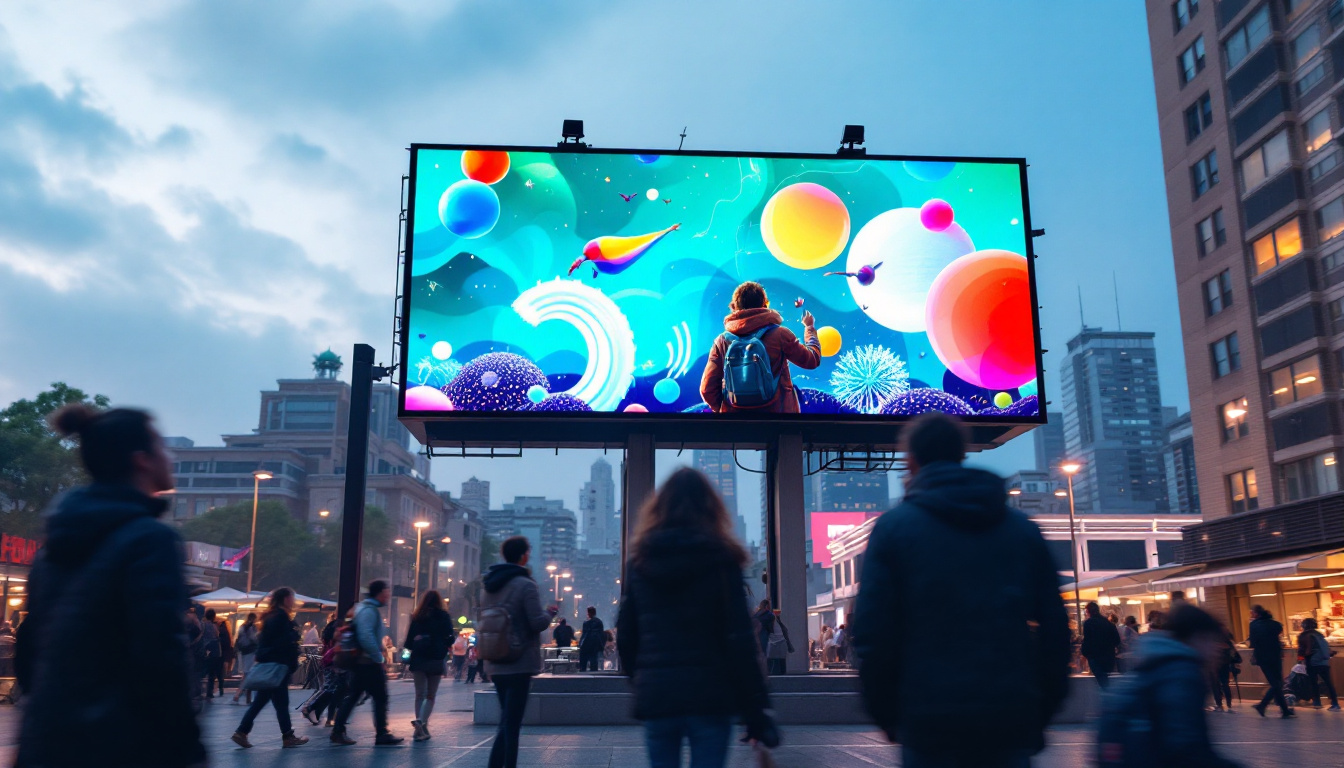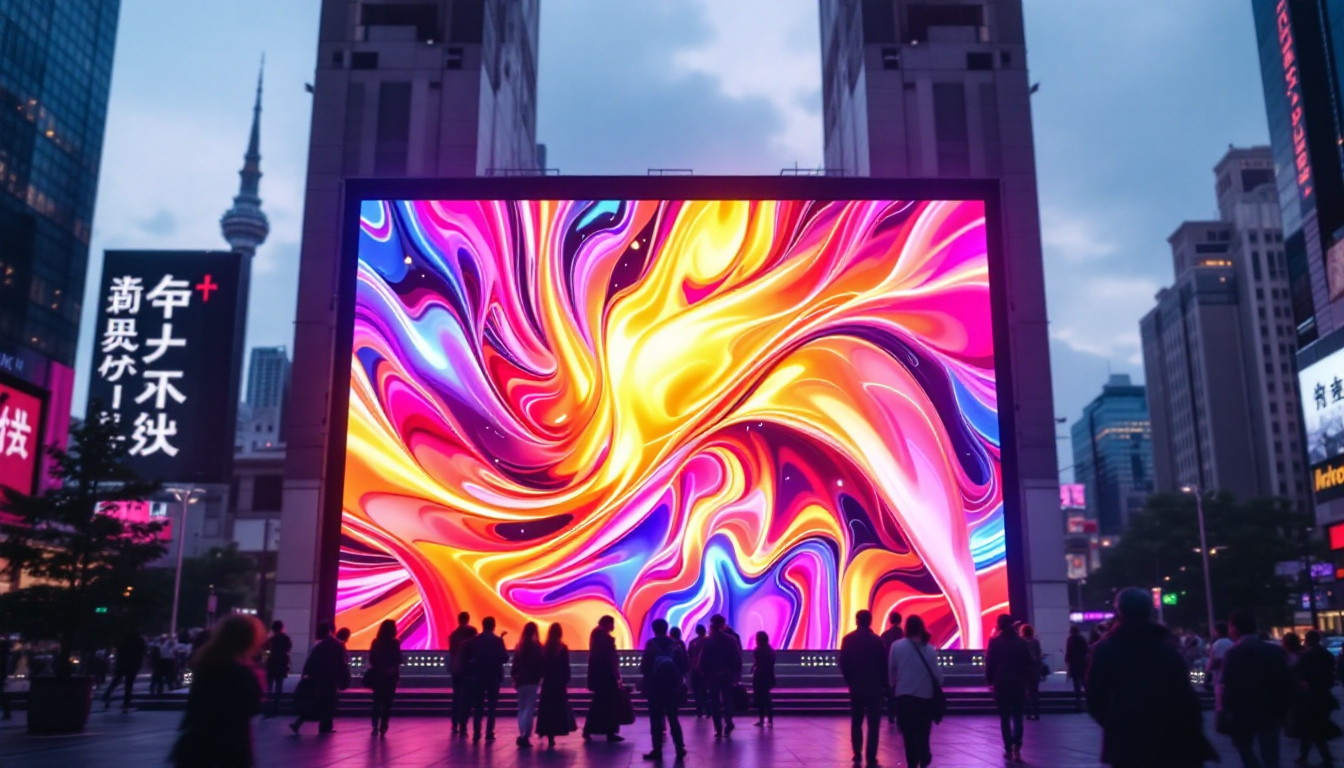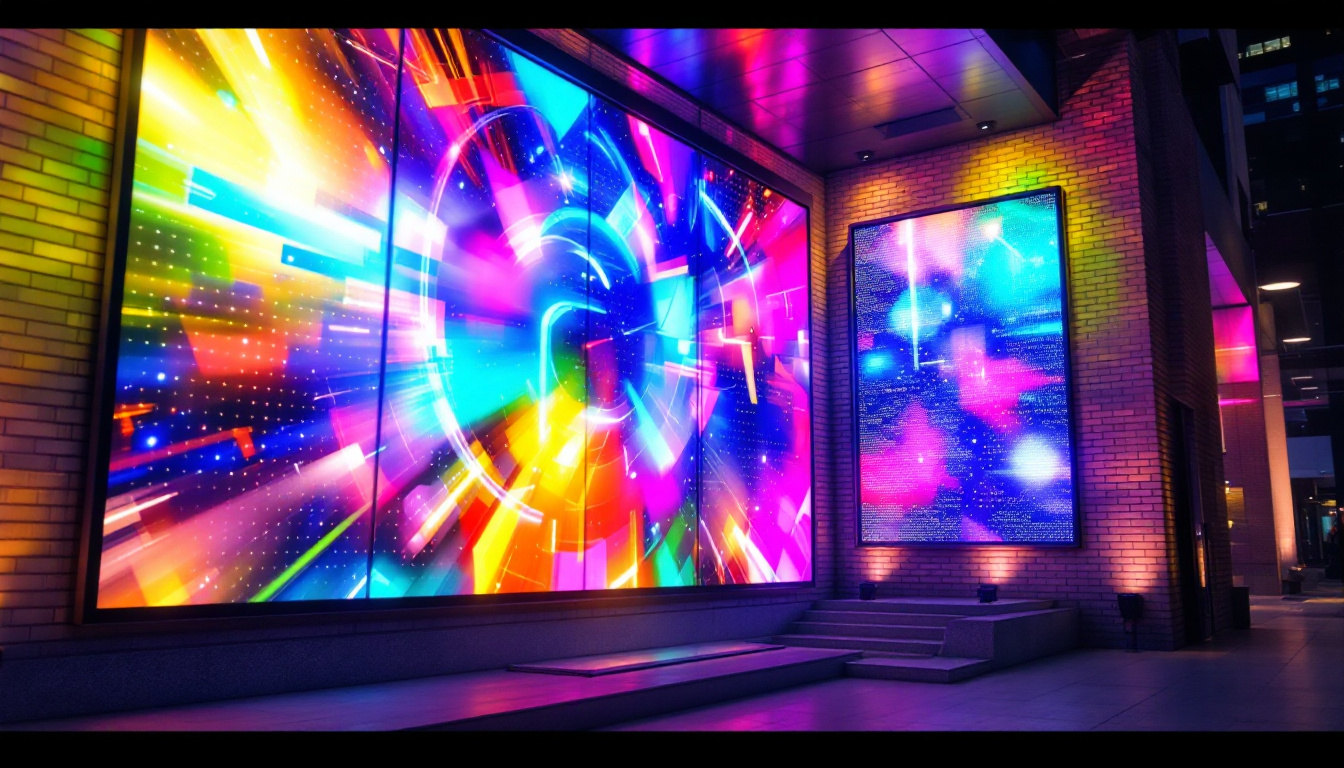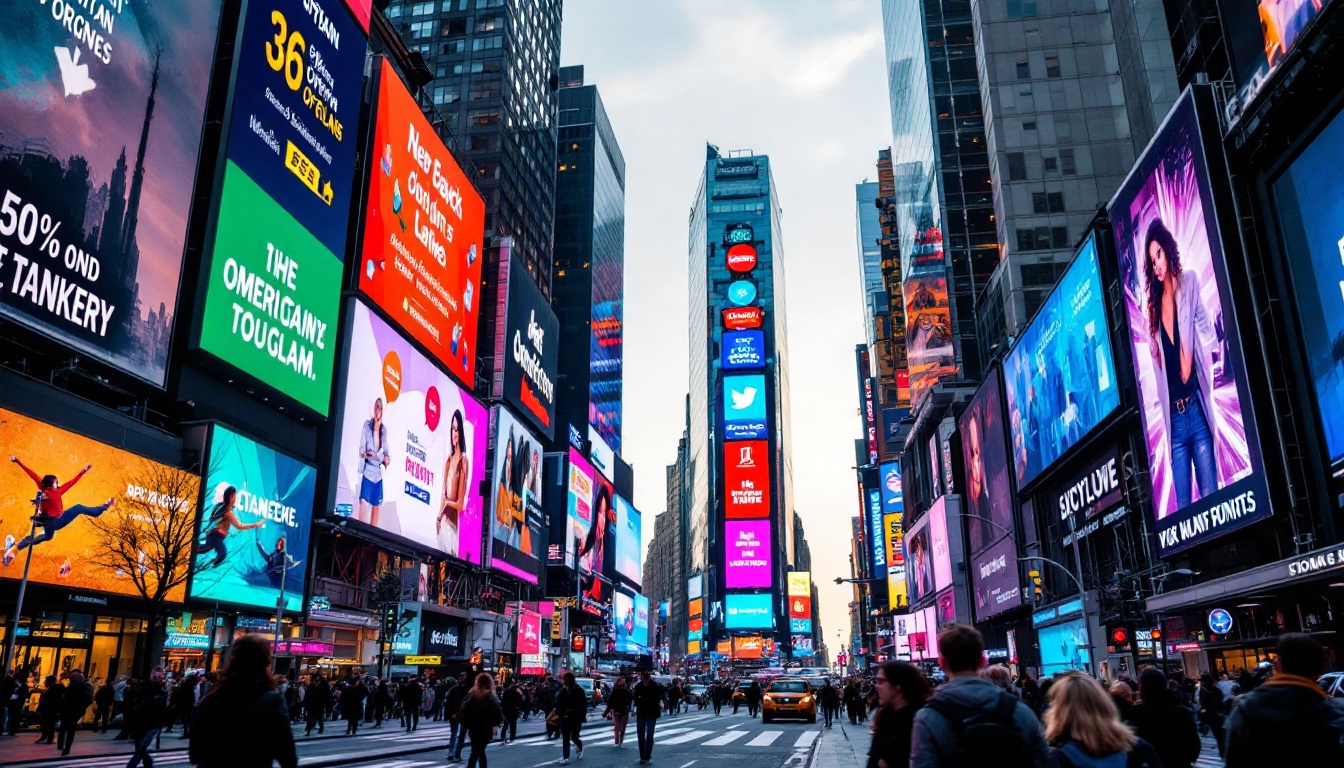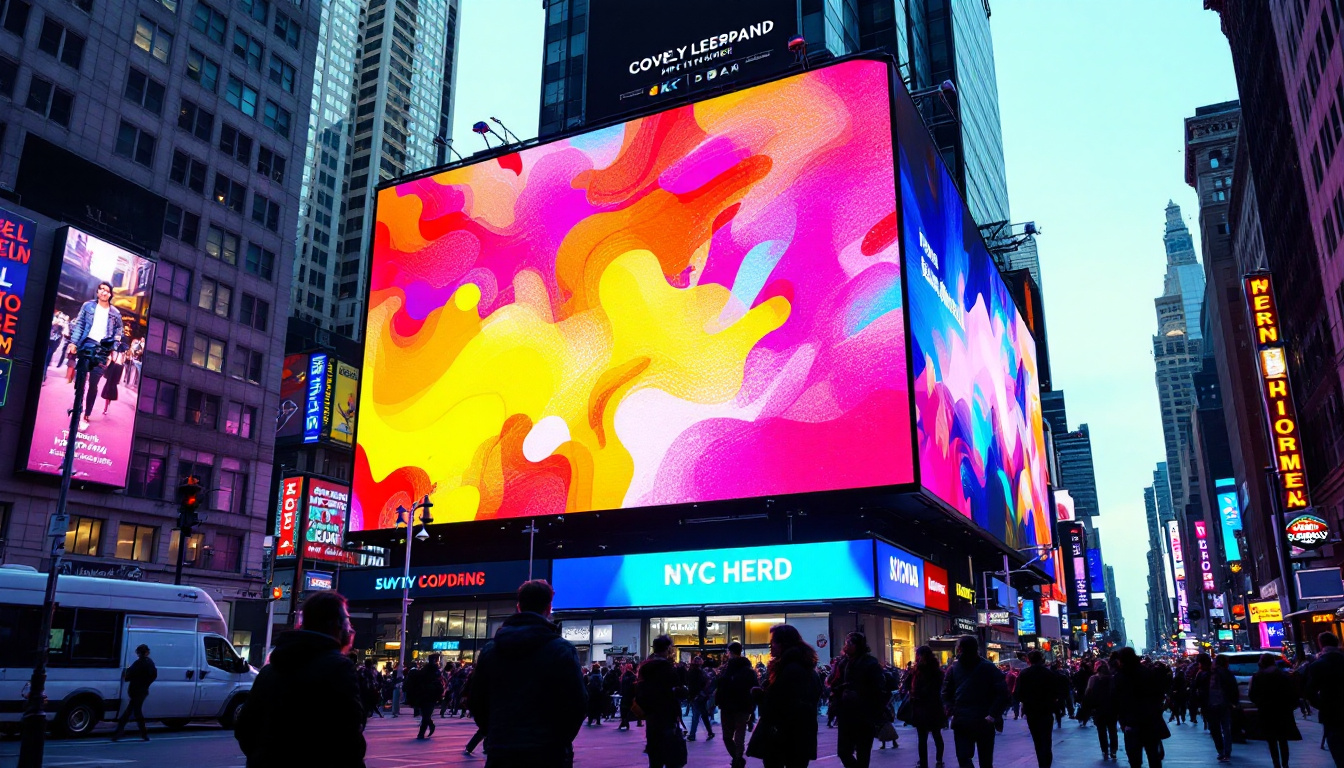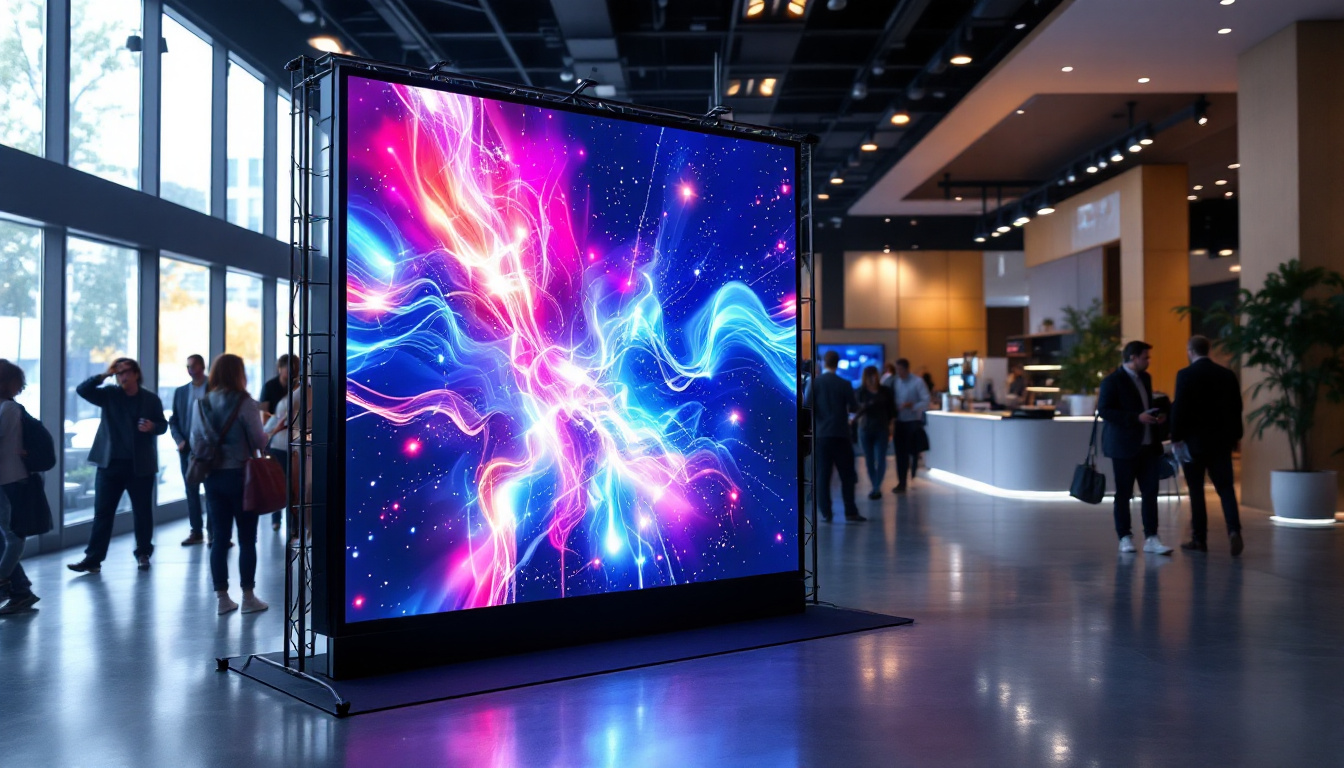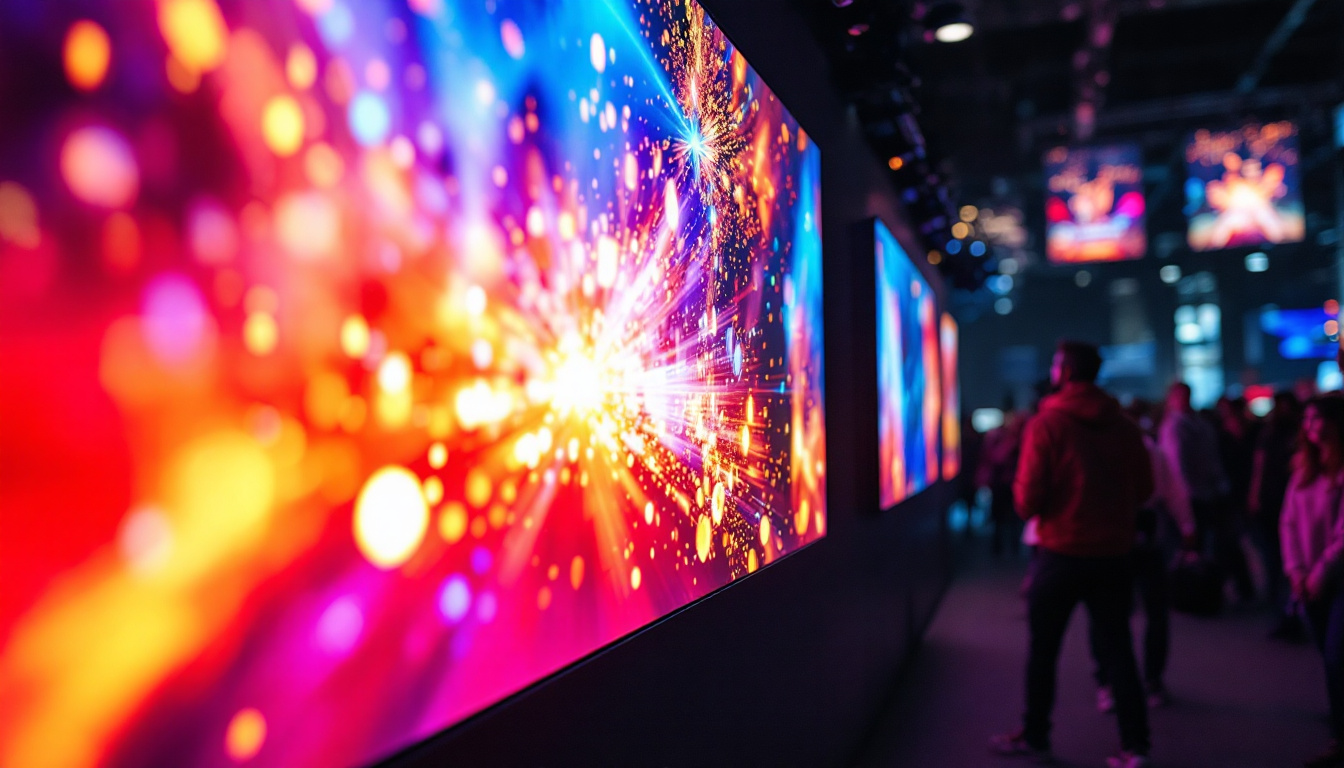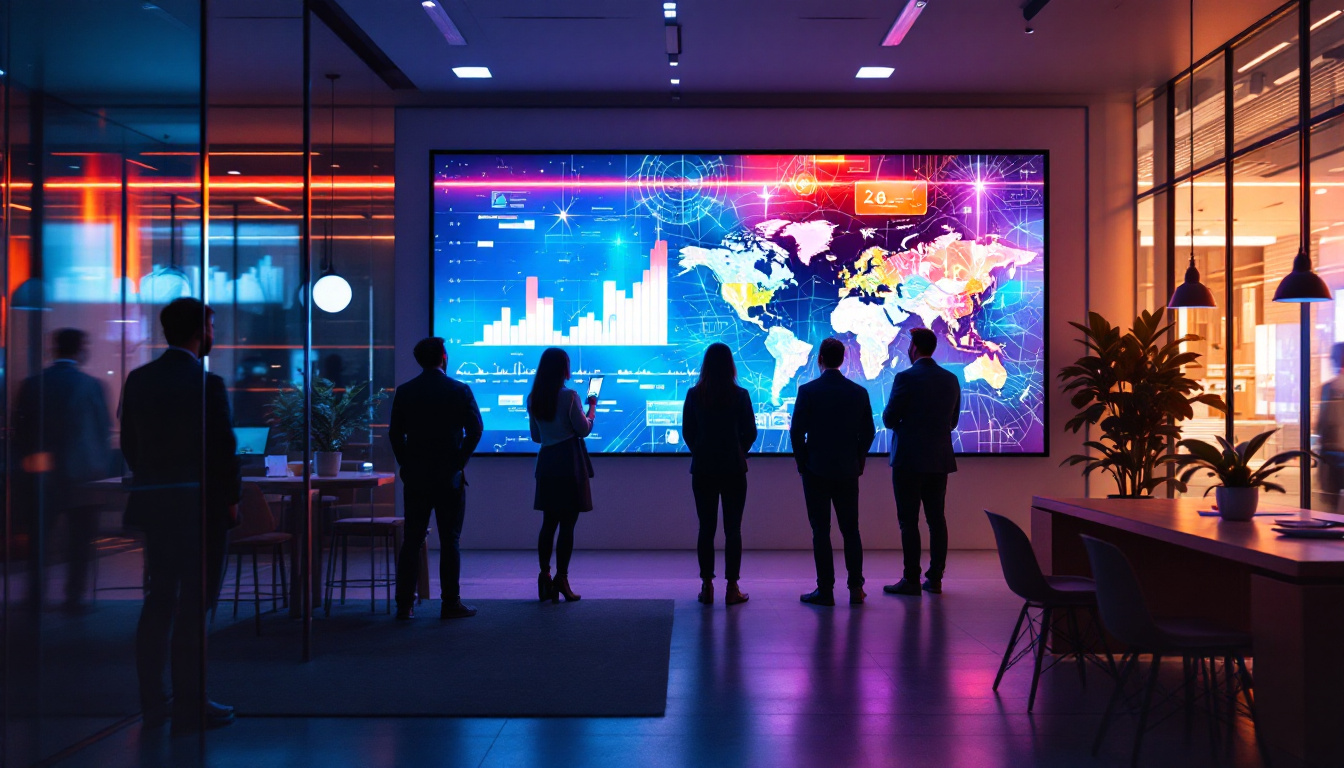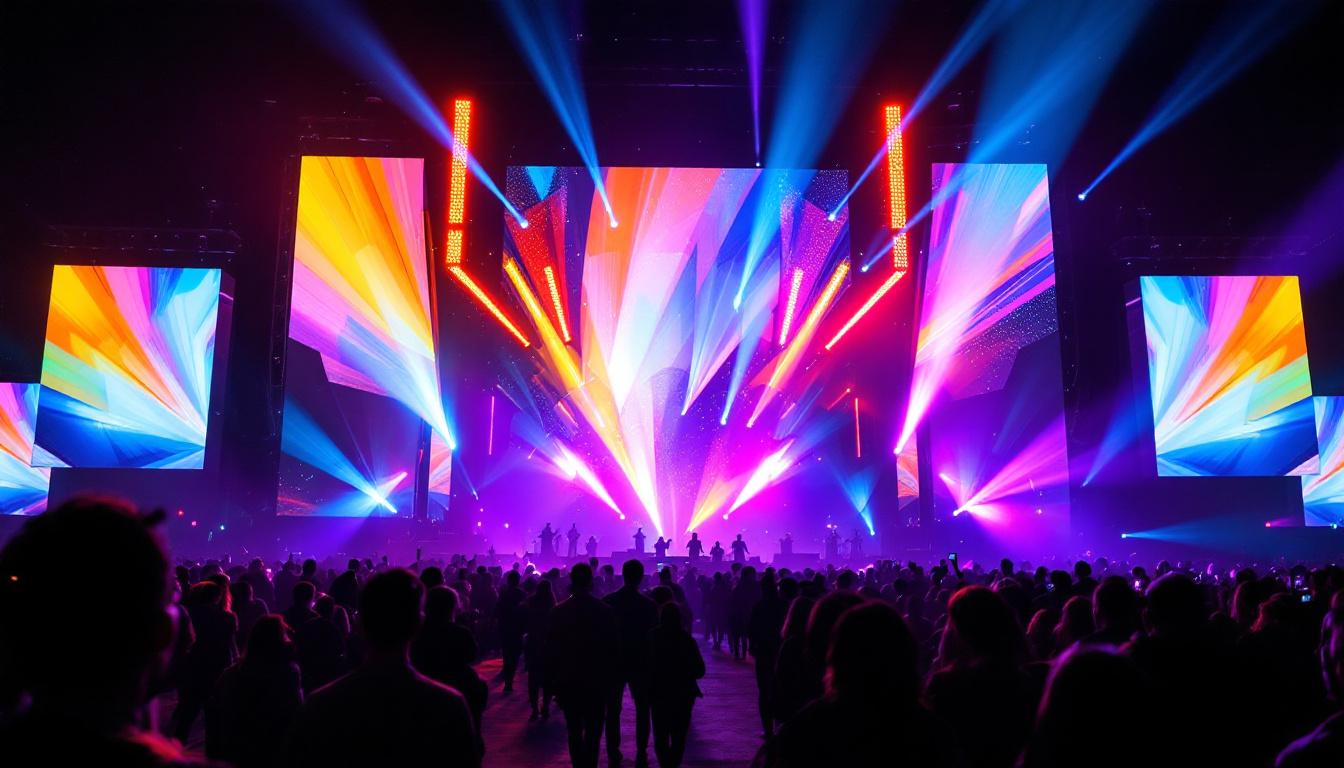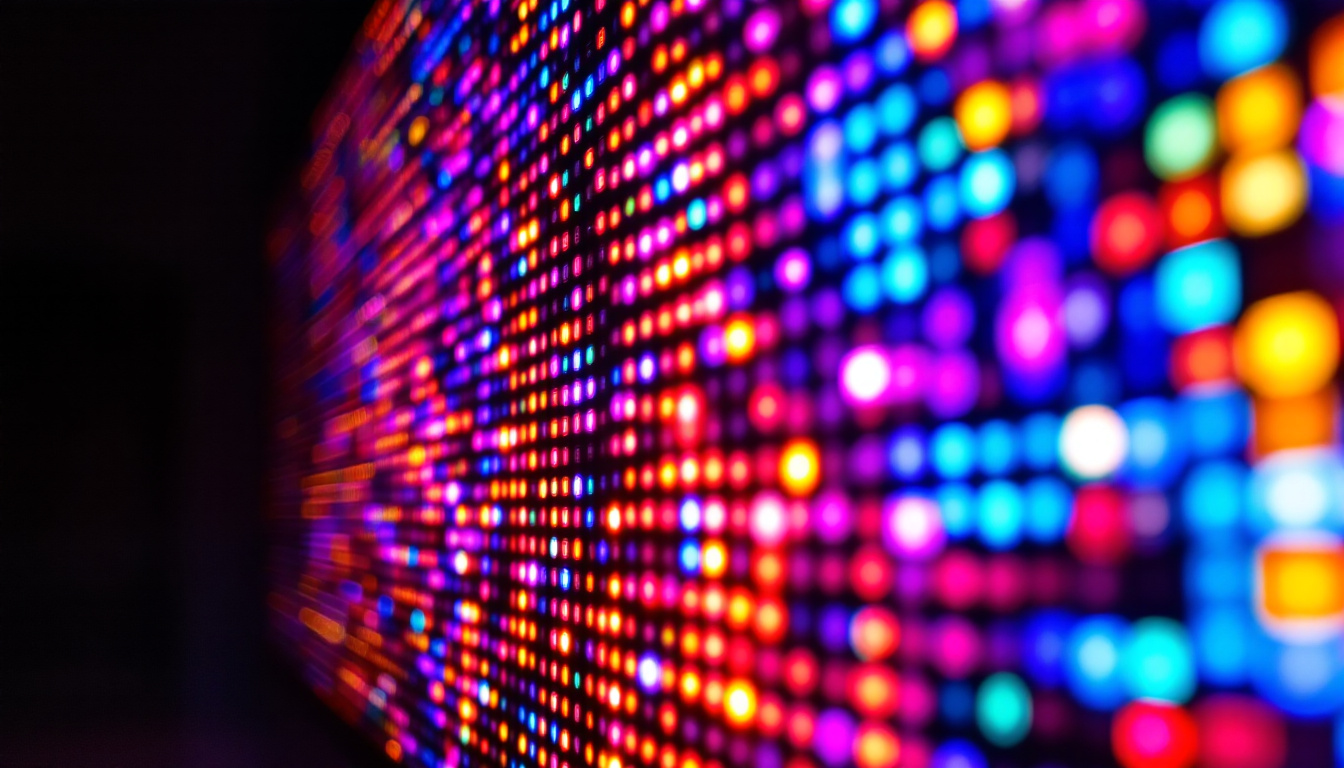In the modern world, outdoor advertising has evolved significantly, with LED displays at the forefront of this transformation. These vibrant screens have become a staple in urban landscapes, capturing the attention of passersby and delivering messages with unparalleled clarity and brightness. This article delves into the intricacies of outdoor LED displays, their benefits, and their applications across various industries.
Understanding LED Technology
Light Emitting Diodes (LEDs) are semiconductor devices that convert electricity into light. The technology behind LEDs has advanced dramatically over the years, allowing for the creation of high-quality displays that can be utilized in various settings, particularly outdoors. From the early days of simple indicator lights to the vibrant, full-color displays we see today, LEDs have revolutionized the way we communicate visually. Their energy efficiency and longevity make them an increasingly popular choice for both commercial and residential applications.
The Basics of LED Displays
LED displays are composed of numerous individual light-emitting diodes arranged in a grid. Each diode emits light of a specific color, and when combined, they can produce a wide spectrum of colors. The resolution of an LED display is determined by the pixel pitch, which is the distance between the centers of two adjacent pixels. A smaller pixel pitch results in higher resolution and clearer images, making it ideal for close viewing distances. This is particularly important in settings such as sports arenas and concert venues, where the audience is often very close to the display. Additionally, advancements in technology have allowed for the development of ultra-high-definition (UHD) displays, which provide even greater detail and clarity, enhancing the overall viewing experience.
Types of Outdoor LED Displays
Outdoor LED displays can be categorized into several types based on their applications and design. The most common types include:
- Fixed LED Displays: These are permanently installed screens used for advertising, information dissemination, and entertainment.
- Mobile LED Displays: These are portable screens mounted on vehicles or trailers, allowing for flexible advertising opportunities.
- Interactive LED Displays: These screens engage viewers through touch or motion sensors, creating a dynamic advertising experience.
In addition to these, there are also specialized LED displays such as transparent LED screens, which allow for visibility through the display while still showcasing vibrant content. This innovative design is particularly useful in retail environments, where brands can maintain a visual connection with the outside world while promoting their products. Furthermore, curved LED displays are gaining popularity as they provide a more immersive viewing experience, especially in large venues where traditional flat screens may not suffice.
How LED Displays Work
LED displays operate using a combination of hardware and software. The hardware includes the LED modules, control systems, and power supplies, while the software manages the content displayed on the screen. Content can be updated remotely, allowing for real-time changes and the ability to target specific audiences based on time, location, or event. This capability is particularly advantageous for businesses looking to maximize their advertising efforts, as they can tailor messages to suit different demographics or occasions, such as holidays or local events. Moreover, the integration of advanced analytics tools allows advertisers to track engagement and effectiveness, further optimizing their campaigns.
Advantages of Outdoor LED Displays
The rise of outdoor LED displays can be attributed to their numerous advantages over traditional advertising methods. These benefits make them an attractive option for businesses looking to enhance their visibility and engagement.
High Visibility and Brightness
One of the most significant advantages of outdoor LED displays is their exceptional visibility. Unlike traditional billboards, LED screens can be seen clearly in various lighting conditions, including direct sunlight. The brightness of LED displays can be adjusted automatically based on ambient light, ensuring that content remains visible at all times. This adaptability not only maximizes the effectiveness of the advertisement but also ensures that it captures the attention of potential customers, regardless of the time of day or weather conditions.
Moreover, the high resolution of modern LED displays allows for sharp and vibrant images that can convey messages more effectively than static signs. This clarity can be particularly beneficial in urban environments where competition for attention is fierce. As pedestrians and drivers navigate busy streets, a well-placed LED display can stand out and draw in viewers, making it an essential tool for brands aiming to make a lasting impression.
Dynamic Content and Flexibility
Outdoor LED displays allow for dynamic content, enabling advertisers to change messages frequently and easily. This flexibility means that businesses can tailor their advertising campaigns to suit specific events, promotions, or seasonal changes. Additionally, the ability to incorporate animations and videos enhances viewer engagement, making the advertisements more memorable. For instance, a retail store can promote a flash sale with eye-catching animations that not only inform but also entertain, driving foot traffic to their location.
Furthermore, the integration of real-time data into LED displays can create even more engaging content. Businesses can display live updates, such as weather forecasts, news headlines, or social media feeds, which can attract viewers’ attention and encourage them to interact with the brand. This level of interactivity not only fosters a connection with the audience but also positions the brand as relevant and in tune with current events, enhancing its overall image.
Cost-Effectiveness and Longevity
While the initial investment in outdoor LED displays may be higher than traditional signage, the long-term benefits often outweigh the costs. LED technology is energy-efficient, consuming significantly less power than other display technologies. Furthermore, LED displays have a long lifespan, often lasting over a decade with minimal maintenance, making them a cost-effective advertising solution in the long run. This durability means that businesses can rely on their displays for consistent performance without the frequent need for replacements or repairs, which can be a significant cost saver.
In addition to their energy efficiency and longevity, outdoor LED displays can also provide a higher return on investment (ROI) compared to traditional advertising methods. With the ability to reach a larger audience and deliver impactful messages, businesses can see increased foot traffic and sales as a direct result of their advertising efforts. As more companies recognize the value of LED technology, the potential for enhanced brand visibility and customer engagement continues to grow, making outdoor LED displays a smart investment for the future.
Applications of Outdoor LED Displays
Outdoor LED displays have found applications across various industries, revolutionizing how businesses communicate with their audiences. From retail to sports, these displays serve as powerful marketing tools.
Retail Advertising
In the retail sector, outdoor LED displays are commonly used to promote products, sales, and events. Retailers can showcase their latest offerings in vibrant colors and engaging formats, attracting customers’ attention as they pass by. The ability to update content in real-time allows retailers to respond quickly to market trends and customer preferences.
Event Promotion
Outdoor LED displays are also widely used for event promotion. Concerts, festivals, and sporting events benefit from large screens that display schedules, ticket information, and live feeds. These displays enhance the overall experience for attendees, providing them with essential information and entertainment throughout the event.
Transportation Hubs
Airports, train stations, and bus terminals utilize outdoor LED displays to convey important information to travelers. These screens can display arrival and departure times, wayfinding information, and emergency alerts. The clarity and visibility of LED displays ensure that passengers receive timely updates, contributing to a smoother travel experience.
Challenges and Considerations
Despite their many advantages, outdoor LED displays also come with challenges that businesses must consider before investing. Understanding these challenges can help organizations make informed decisions.
Regulatory Compliance
Outdoor advertising is subject to various regulations that vary by location. Businesses must ensure that their LED displays comply with local laws regarding size, brightness, and content. Failure to adhere to these regulations can result in fines or the removal of the display, making it crucial for companies to conduct thorough research before installation.
Maintenance and Upkeep
While LED displays are known for their longevity, they still require regular maintenance to ensure optimal performance. Dust, dirt, and environmental factors can affect the display’s clarity and functionality. Regular cleaning and prompt repairs are essential to keep the display in excellent condition, which can incur additional costs for businesses.
Initial Investment
The initial cost of purchasing and installing outdoor LED displays can be significant. Businesses must weigh this investment against potential returns and consider their advertising budgets. However, with careful planning and strategic content management, many companies find that the long-term benefits justify the initial expenditure.
The Future of Outdoor LED Displays
The future of outdoor LED displays looks promising, with advancements in technology and increasing demand for digital advertising. As businesses continue to seek innovative ways to engage consumers, LED displays will likely play a central role in shaping the advertising landscape.
Integration with Smart Technology
As smart technology continues to advance, outdoor LED displays are expected to integrate with various systems, such as social media platforms and data analytics tools. This integration will allow for more targeted advertising, enabling businesses to reach specific demographics based on real-time data. Advertisers can tailor their messages based on weather conditions, local events, and consumer behavior, enhancing the effectiveness of their campaigns.
Enhanced Interactivity
Future outdoor LED displays are likely to feature enhanced interactivity, allowing consumers to engage directly with the content. Touchscreens, augmented reality, and gamification elements can create immersive experiences that captivate audiences. This level of interactivity not only increases engagement but also fosters a deeper connection between brands and consumers.
Sustainability Initiatives
As environmental concerns continue to grow, the demand for sustainable advertising solutions will rise. Outdoor LED displays are already energy-efficient, but future innovations may focus on using recyclable materials and reducing carbon footprints. Companies that prioritize sustainability in their advertising strategies will likely resonate with environmentally conscious consumers.
Conclusion
Outdoor LED displays have revolutionized the advertising landscape, offering businesses a dynamic and engaging way to connect with their audiences. With their high visibility, flexibility, and cost-effectiveness, these displays have become essential tools for various industries. However, potential challenges such as regulatory compliance and maintenance must be considered before making an investment.
As technology continues to evolve, the future of outdoor LED displays looks bright. The integration of smart technology, enhanced interactivity, and sustainability initiatives will shape the next generation of advertising solutions. Businesses that embrace these advancements will be well-positioned to thrive in an increasingly competitive marketplace.
In conclusion, outdoor LED displays are more than just screens; they are powerful communication tools that can elevate a brand’s presence and engage consumers in meaningful ways. As the digital landscape continues to expand, the potential for outdoor LED displays will only grow, making them a vital component of modern advertising strategies.
Discover LumenMatrix LED Display Solutions
Ready to transform your advertising strategy with the power of LED technology? Explore LumenMatrix’s comprehensive range of LED display solutions, from vibrant outdoor walls to interactive floor displays. As a pioneer in the industry, LumenMatrix is committed to enhancing your brand’s visibility with displays that captivate and engage. Whether you’re looking to create an unforgettable visual experience or communicate your message with unparalleled clarity, LumenMatrix has the innovative solution you need. Check out LumenMatrix LED Display Solutions today and take the first step towards revolutionizing your visual communication.

